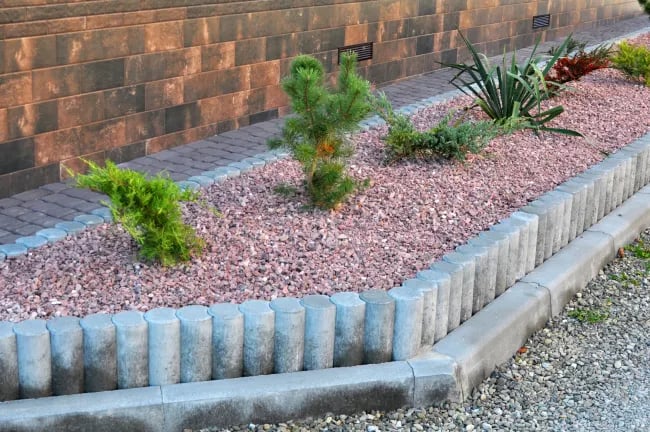What is Compost?
When organic matter is decomposed in the right way, it turns waste into a dark, moist, nutrient-rich mix - the black gold that gardeners call compost.
Compost is becoming more and more popular these days as an environmentally friendly alternative to chemical fertilizers and a good way to reuse your kitchen scraps and grass clippings. However, making compost is not just about throwing your food scraps into a compost bin and waiting for the magic to happen. For the organic material to decompose properly and become rich, clean and safe, there is a composting process to follow, as well as specific ratios of the various ingredients that go into it.
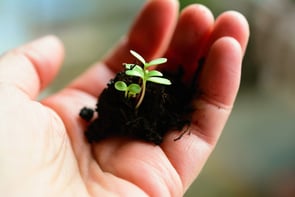
Minick Materials are experts in compost: we own a state-licensed composting facility in which we make our special brands of compost. Our experts blend the perfect mix of fruits, vegetables, carbon sources, and stockyard manure to create our signature Dark Forest and Prairie Gold compost - we even use Zoo Poo (which is exactly what you think it is) to create a unique specialty compost.
Our compost is aged at temperatures that kill weed seeds, pests, and destructive pathogens, to make sure your plants get all the nutrition without any risks.
What Materials Should Good Compost Contain?
The composting process relies on microorganisms, which break down organic material into rich, hummus-like compost. These microorganisms need oxygen to breathe and work, and water is also required to balance the process and regulate the temperature. There must also be a certain ratio of wet components to dry components, to maintain the right carbon to nitrogen proportion.
Let’s go into the ingredients in more detail, shall we? They are:
- Carbon
- Nitrogen
- Air
- Water
Carbon
Carbon-rich ingredients tend to be dry and brown. Think of dry leaves, shredded branches of trees and bushes, wood chips, sawdust, straw, and hay. You can also add compostable man-made materials such as shredded newspaper and cardboard. These materials should be shredded as finely as possible to reduce composting time, and layered with the wet materials we’re going to talk about next.
Nitrogen
All plant material contains both carbon and nitrogen, but the proportions vary. Wet, green or colorful materials tend to be richer in nitrogen - think fresh grass clippings, fruit and vegetable peels, and leftovers, and other kitchen refuse such as tea bags and eggshells. Other nitrogen-rich materials are manure, algae, seaweed, and lake moss, in case you have access to them. Again, we recommend shredding as finely as possible so your compost doesn’t take too long to be ready.
Air
Good compost is microbially active (it’s full of living, breathing microorganisms) and that’s why it requires regular aeration, so the bacteria that decompose all that organic matter have the oxygen they need to live and work. Aeration of compost is a manual process: you can turn your compost heap over, mix it up occasionally, move the contents of one bin into another bin, or if you have those fancy tumbler-type bins, just give the handle a few good spins.
Turning your compost pile will create air pockets in it, keeping it light and “fluffy” and ensuring your hard-working bacteria keep working hard to turn trash into compost.
Water
All living beings need water, and that includes all the fungi, bacteria, and if you’re lucky also earthworms living in your compost pile. That said, the wet ingredients in your compost should provide most of that water - with the right mix of ingredients, compost should be about as moist as a wrung-out sponge. If it gets too wet, it may become smelly and slimy. But if it dries out, some of your hard-working bacteria may die, therefore slowing or even stopping the composting process altogether.
Some experts recommend adding some water when you turn the compost if it’s looking dry, and also soaking straw and paper before you add them, so they don’t reduce the moisture of the mix.
What is Compost Used For?
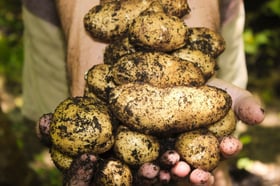
Compost is one of the best organic fertilizers, and it is used as a soil amendment to improve dry or poor soils and provide yummy nutrients to your plants, helping them grow better and produce more crops. In an established garden, add compost when you want to improve the quality of your soil, when the soil is looking too dry (or too wet), and when plant roots are not developing properly.
Vegetable gardens also benefit from regular additions of compost, since compost regulates the humidity in the soil and keep ideal conditions for the root ecosystem, which in turn increases nutrient absorption and helps you obtain more fruit of better quality.
When Should You Add Compost?
If you live in a region with very well defined seasons, you want to go on a garden compost spree either before or after winter, to get your garden ready for hibernation and a spring awakening. The timing for adding compost will depend on the type of mulch you have at hand.
If you have homemade compost, with some fibers and chunks still left in it, spread a 2-3 inch layer on your garden in late fall and cover with a good layer of winter mulch (chopped leaves are great for this.) This will give your compost more time to decompose further and to let the nutrients seep into the soil.

If you’re using one of our great mulches, like Prairie Gold, it will be fully mature, screened, finely ground and ready to unleash good nutrients and moisture into your soil. Spread a 2-inch deep layer over the soil and rake it in gently. If you do this two weeks before you do your spring planting, your crops will thank you with abundant flowers and fruit.
Compost FAQs
What's the difference between potting soil & compost?
You may think “if compost is so full of nutrients, I should just fill my plant pots with it and plant into it directly”. Please don’t do this! A good potting mix will contain organic matter and nutrients, for sure, but it will also have other elements to improve drainage - such as sand or perlite - or to balance other necessities according to the type of plant. Potting soil for cacti and succulents is very different from potting soil for violets since their water retention and acidity requirements are so different.
If you are into container gardening, fill your pots with a mix of soil, compost, peat moss, and other ingredients depending on your plants’ needs. And remember to keep it lightweight, otherwise, you won’t be able to move your containers!
What's better topsoil or compost?
A good answer to this question is neither - neither topsoil nor compost is better than the other. A much better answer is both since what plants will thrive on is actually a healthy mix of both. If you are breaking into new topsoil, planting for the first time in a part of your garden or farm, use the double-digging technique to really work some compost into the soil. It is a lot of work, but it will leave you with loamy, aerated, rich soil that will promote plant growth and productivity.

Is compost or fertilizer better?
Neither is better than the other - it depends on what you need and what point of the plant’s life cycle you are at. Compost has smaller amounts of nutrients that get absorbed over a longer time, while fertilizer has a high concentration of nutrients that get used by the plants a lot faster.
Compost has the added benefit that it is organically made recycling waste materials - anything that is cleaner and better for the environment should be preferred. You may argue that fertilizer is a lot easier to use, since it comes in convenient pellets or even in liquid form, ready to mix with water and sprinkle everywhere.
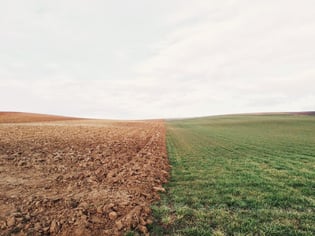
To this, we say “have you heard of compost tea”? Compost tea is a brew made with mature compost (such as our gorgeous, coarse Dark Forest), and the resulting liquid can be sprayed onto leaves for even better nutrient absorption. There are many websites with instructions for brewing your own compost tea, in case you want to give it a try. The process is a little involved, but definitely worth it.
Can I start seeds in compost?
Yes!
This is, in fact, a good idea, and recommended by those in the know. Compost is fluffy by nature: loose and with lots of air between particles, which makes roots grow easier and stronger for seedlings. Additionally, the rich mix of nutrients helps baby plants grow strong during their first days while providing nutrition gently and slowly. Keep your seedlings away from harsh chemical fertilizers and from garden soil - baby plants are not ready for the “real world” until they have grown at least 2 sets of true leaves.


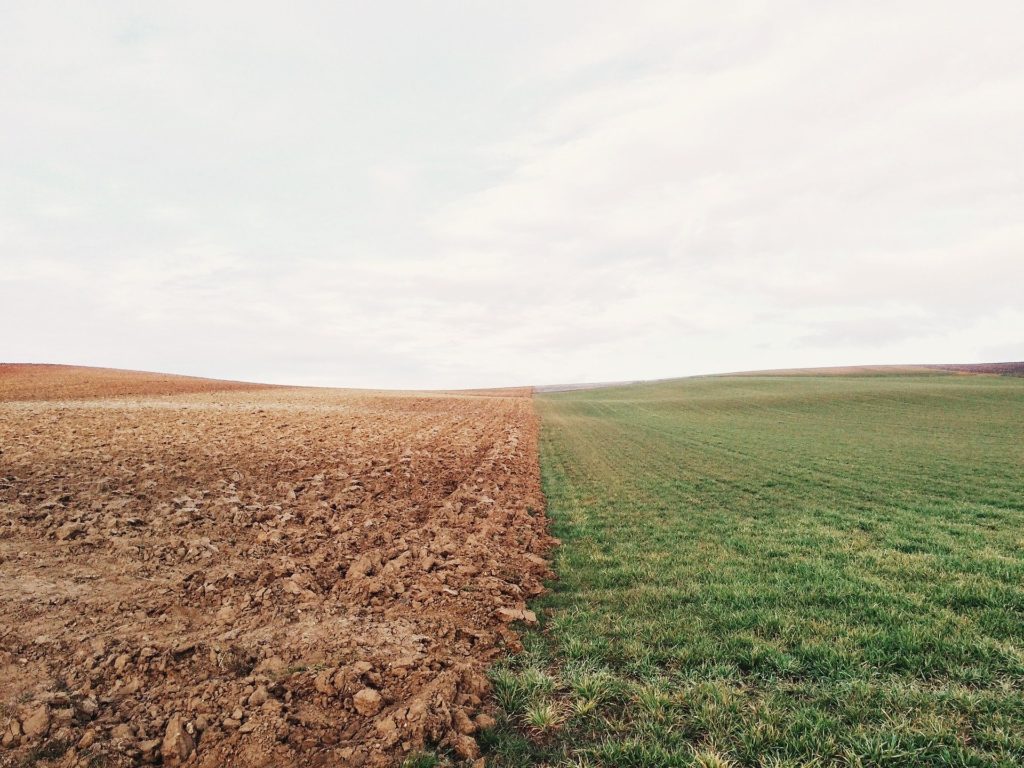



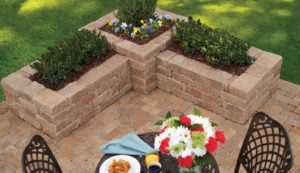
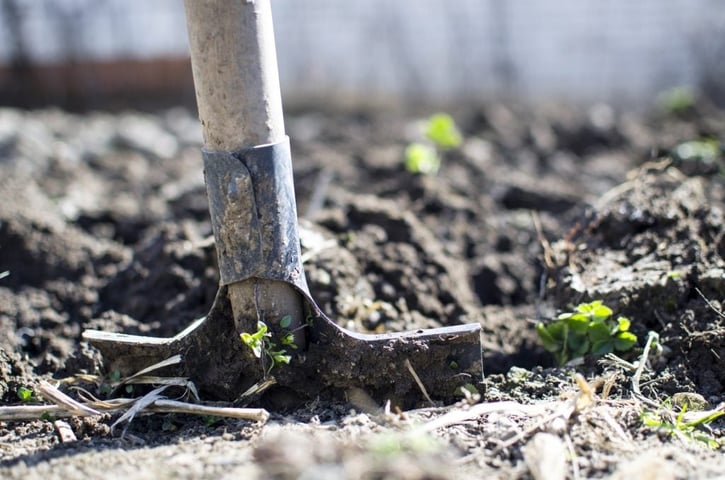
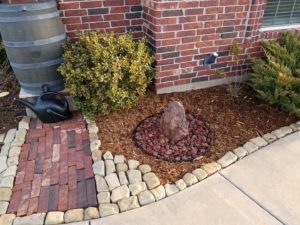
![All About Soil Compaction: Causes, Challenges & Solutions [A Guide]](https://4445234.fs1.hubspotusercontent-na1.net/hub/4445234/hubfs/Imported_Blog_Media/plants-2411458_1920-1024x683.jpg?width=725&name=plants-2411458_1920-1024x683.jpg)
